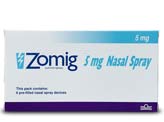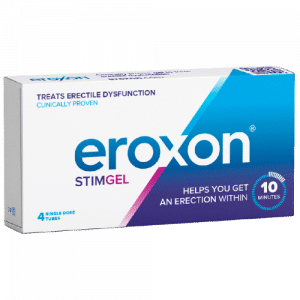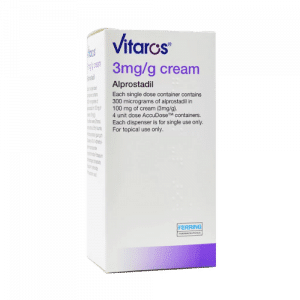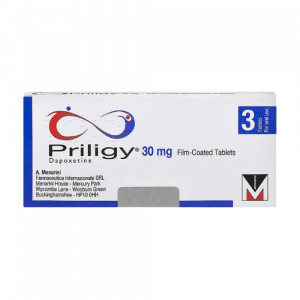
Zomig Nasal Spray provides rapid relief from migraine headaches by targeting the swelling of blood vessels in the brain. This convenient nasal spray format allows for fast absorption, offering relief for those experiencing nausea or difficulty swallowing pills. Suitable for adults diagnosed with migraine, Zomig Nasal Spray is an effective solution for managing migraine symptoms, including pain, nausea, and sensitivity to light and sound. Begin your online consultation today to determine if Zomig Nasal Spray is right for your migraine treatment plan.
Zomig Nasal Spray (zolmitriptan)
£48.93 – £53.34
Product Information
About Zomig Nasal Spray (zolmitriptan)
Tablets, sprays, and melts
Dr Fox supplies Zomig and the generic form of zolmitriptan as a nasal spray, tablets, or melts (sometimes called orodispersible tablets) which dissolve in the mouth and do not need to be swallowed.
Zomig is the original brand, but the original patent has expired and generic zolmitriptan can now be manufactured by other pharmaceutical companies, usually at lower cost. The generic medication contains the same active ingredient – zolmitriptan – as branded Zomig.
How does zolmitriptan work?
Migraine occurs when blood vessels in the head relax and become swollen and leakier. Zolmitriptan reduces this swelling of the blood vessels reducing headache and other migraine symptoms.
Buying zolmitriptan online
It is important to consult your GP to have a clear diagnosis of migraine, before buying supplies of migraine treatment online. Consult your GP if your symptoms are changing or you develop any new symptoms with your migraine headaches.
Who can take zolmitriptan?
Zolmitriptan is only for people who have been diagnosed with migraine. It will not work for other sorts of headaches. Migraine headaches are usually throbbing and severe and are associated with nausea, vomiting, and a dislike of strong light (photophobia). They tend to be only on one side of the head, but not always. They sometimes start with symptoms such as flashing lights or other visual or sensory changes (aura), with the headache phase coming later. They usually last a few hours and then settle, with no symptoms in between. See the NHS migraine page for further details.
Who should not use zolmitriptan?
If any of the following apply, you should discuss them with your GP before taking zolmitriptan as it may be best to use alternative (non-triptan) migraine treatments:
- History of fits or seizures.
- Serious liver or kidney disease.
- Over 65 years old.
- If you are a heavy smoker (over 25/day), a man over 40, or a woman past menopause – you may be at extra risk of developing heart disease and may need extra checks from your GP before taking zolmitriptan.
- Have had a heart attack, stroke, or mini-strokes (TIAs) in the past.
- Angina (heart pain on exertion).
- Problems with poor circulation (peripheral vascular disease).
- Irregular heart rhythm including Wolff-Parkinson-White syndrome.
- Uncontrolled high blood pressure.
Do not take zolmitriptan if you have a known allergy to other triptans.
Taking zolmitriptan with other medicines
Other migraine treatments
Zolmitriptan belongs to a group of medicines called triptans, and it should not be taken at the same time as other triptans used to treat migraine, including sumatriptan, naratriptan, rizatriptan, almotriptan, eletriptan, and frovatriptan.
Other types of migraine treatments may also interact, particularly ergotamine or similar ergot-type medicines. Leave at least 24 hours between taking these medications and zolmitriptan.
Antidepressant medication
Zolmitriptan can interact with antidepressant medications including SSRIs, SNRIs, and herbal remedies containing St John’s Wort. It should not be taken within 2 weeks of MAOIs (monoamine oxidase inhibitors) type antidepressants. If you are taking any medication for depression/low mood consult the prescriber about whether you can use zolmitriptan.
Other medicines
If also taking either of these medicines below check with your GP. They may recommend you to use a lower dose of zolmitriptan:
- Cimetidine (rarely used – for indigestion or stomach ulcer).
- Ciprofloxacin (rarely used – quinolone type antibiotic).
See also the ‘other medicines’ section of the manufacturer’s patient information leaflets.
Dr Fox checks for interacting medication in the online consultation for migraine treatment.
Can zolmitriptan be taken in pregnancy and whilst breastfeeding?
In general, all medication should be avoided whilst trying for pregnancy, and when pregnant or breastfeeding.
There is only limited information about the impact of zolmitriptan in pre-pregnancy and pregnancy. The risks and benefits of treatment should be discussed with your doctor before taking zolmitriptan whilst trying for or during pregnancy.
Minimal amounts pass into breast milk, but manufacturers recommend not to breastfeed or use expressed milk within 24 hours of using zolmitriptan.
Side effects of zolmitriptan
Not all people experience side effects and migraine itself can cause unusual symptoms. Side effects are mostly mild and go away after a short time.
Allergy
Do not take zolmitriptan if you have a known allergy to other triptans.
Serious allergic reactions (rash, hives, wheezing, swollen eyelids and face, and collapse) are rare, but if they do occur immediate medical attention is required – telephone 999 in the UK.
Common side effects
The most common side effects (affecting up to 1 in 10 people) can include:
- Dizziness.
- Headache.
- Increased sensitivity to touch, tingling, pins, and needles.
- Sleepiness.
- Warm feelings, unusual or altered sensations.
- An irregular heart rhythm or missed beats.
- Abdominal pain, feeling sick, vomiting (very rarely can be linked to the reduction of blood flow to the gut, intestines, or spleen when you may also have bloody diarrhoea. If this happens, contact a doctor urgently).
- Dry mouth, difficulty swallowing (dysphagia).
- Muscle weakness or muscle pain, or general weakness.
- Chest pain or a feeling of heaviness, tightness, pain, or pressure in throat, neck, limbs, or chest – very rarely this could be angina and could lead to a heart attack (15 minutes of severe chest pain, clammy, short of breath, often also with pain in the jaw and arms – seek emergency medical help: telephone 999 in the UK.
Additional side effects of Zomig nasal spray can include:
- Nose bleed.
- Irritation in the nose.
- Increased sensitivity in the nose.
- Taste disturbance.
A full list of side effects can be found in the manufacturer’s patient information leaflets.
How to use zolmitriptan tablets
Zolmitriptan is not a preventative. Only use when there is a migraine headache. The best effect is from using Zomig/zolmitriptan as soon as the migraine headache begins, but they can also be effective if used later in the attack. Do not take any aura.
Zolmitriptan (Zomig) 2.5mg and 5mg tablets
Start with taking one zolmitriptan 2.5mg tablet.
Swallow the tablet whole with a drink of water. It can be taken with or without food.
The headache should be improving within one hour of taking the tablet.
If you still have a headache after 2 hours, or it comes back within 24 hours, then a second 2.5mg tablet can be taken. Do not take Zomig/zolmitriptan more than twice in 24 hours.
If the 2.5mg dose does not manage the migraine completely, then you can use 5mg tablets in future attacks. Side effects are more likely if taking the higher dose.
The maximum dose of zolmitriptan tablets in 24 hours is 10mg (2 x 5mg tablets) in total.
Orodispersible zolmitriptan (Zomig Rapimelt) 2.5mg and 5mg tablets
Some people who feel very nauseous with migraine may find the orodispersible tablet or Rapimelt system works better. The tablets are not swallowed with water but are left on the tongue to dissolve. They may not work well if you have a dry mouth. They can be taken at the same time as food or liquid. Zomig Rapimelt tablets are orange-flavoured. Generic orodispersible zolmitriptan is either orange or peppermint flavoured.
The dose is the same as the normal tablets. Start with a 2.5mg tablet. Do not push the tablet through the pack as it may break.
- Separate one blister from the pack.
- Peel the blister pack open carefully as shown.
- Carefully remove the tablet.
- Place the tablet on the tongue and leave to dissolve, then swallow with saliva.
The headache should be showing signs of improvement after 1 hour. If it is still there after 2 hours a further tablet can be taken. Take only two doses in 24 hours.
The higher-strength 5mg tablets can be used in future attacks if 2.5mg is not strong enough. With higher doses, there is a greater chance of side effects (maximum dose 2 x 5mg in 24 hours).
How to use Zomig 5mg nasal spray

A nasal spray is another alternative if someone feels very nauseous with a migraine headache. It also works very quickly as the active ingredient is mostly absorbed directly from the nose. Signs of improvement can be noticed in 15 minutes.
Zomig Nasal Spray is a single-use spray unit containing 5mg of zolmitriptan. Use one spray in either nostril (left or right). Each pack contains 6 spray units.
It is most effective if used as soon as the headache begins but can be taken at any time during the attack. If symptoms have not settled completely or come back another dose can be taken, but only after 2 hours. No more than 2 doses (10mg) should be used in 24 hours.
Instructions on how to use the spray are listed in the patient leaflet included in the medicine pack, and also available on the Zomig website.
Alternative treatments
Migraines will often improve after a few hours of lying down in a darkened room. Simple painkillers, such as ibuprofen and aspirin, may be effective. Other triptans that are used to treat migraine include sumatriptan, naratriptan, almotriptan, eletriptan, frovatriptan, and rizatriptan. It may be worth trying different triptans to find the one which suits you best.
If vomiting is a problem, a GP may prescribe an anti-sickness medication such as prochlorperazine or metoclopramide. These are not available from Dr Fox.
Some migraine tablets contain a combination of different painkillers and anti-sickness medications. Painkillers that contain codeine and other ‘opiates’ are best avoided as they can increase sickness and are potentially addictive.
People who get frequent migraines (two or more attacks a month) or whose treatment is not working well, may be suitable for long-term preventative treatments, such as daily beta-blocker tablets or other medicines. Discuss this with your GP.
There is ongoing research into migraine treatments and some newer preventative treatments are available usually from specialist migraine doctors. These include botox injections, monoclonal antibody therapies – erenumab, fremanezumab, galcanezumab, and magnetic and nerve stimulation techniques. Alternative therapies include acupuncture various herbs (e.g. feverfew) and other supplements, from health food shops.
Comparing different triptans
| Triptan type | NNT effectiveness score* | Speed of symptom relief | 2nd dose at 2 hours if symptoms continue | 24-hour maximum | Use with propranolol |
| Rizatriptan 10mg tablet | 2.7 | 30 mins | No | 2 tablets | No |
| Sumatriptan 100mg tablet | 3.5 | 30 mins | No | 3 tablets | Yes |
| Imigran 20mg nasal spray | 3.5 | 15 mins | No | 2 sprays | Yes |
| Zolmitriptan 5mg tablet | 4.8 | 1 hour | Yes | 2 tablets | Yes |
| Zolmitriptan 2.5mg tablet | 5 | 1 hour | Yes | 2 tablets | Yes |
| Imigran 10mg nasal spray | 5.5 | 15 mins | No | 2 sprays | Yes |
| Sumatriptan 50mg tablet | 6.1 | 30 mins | No | 6 tablets | Yes |
Comparing different triptans
NNT effectiveness score at 2 hours. Research doctors use NNT (numbers needed to treat) to compare the effectiveness of different medications: lower number = more effective.
References
Related Products
-
Erectile dysfunction medication
Eroxon ED Treatment Gel – 4 Pack
Rated 0 out of 5£25.00 Add to basket -
-
-





